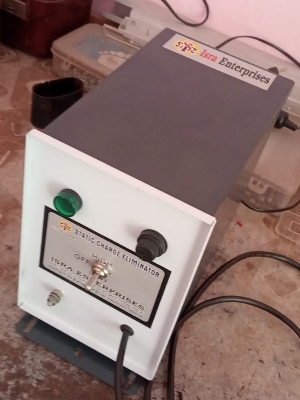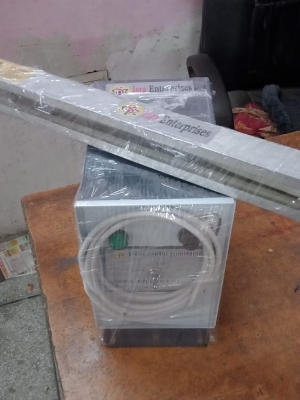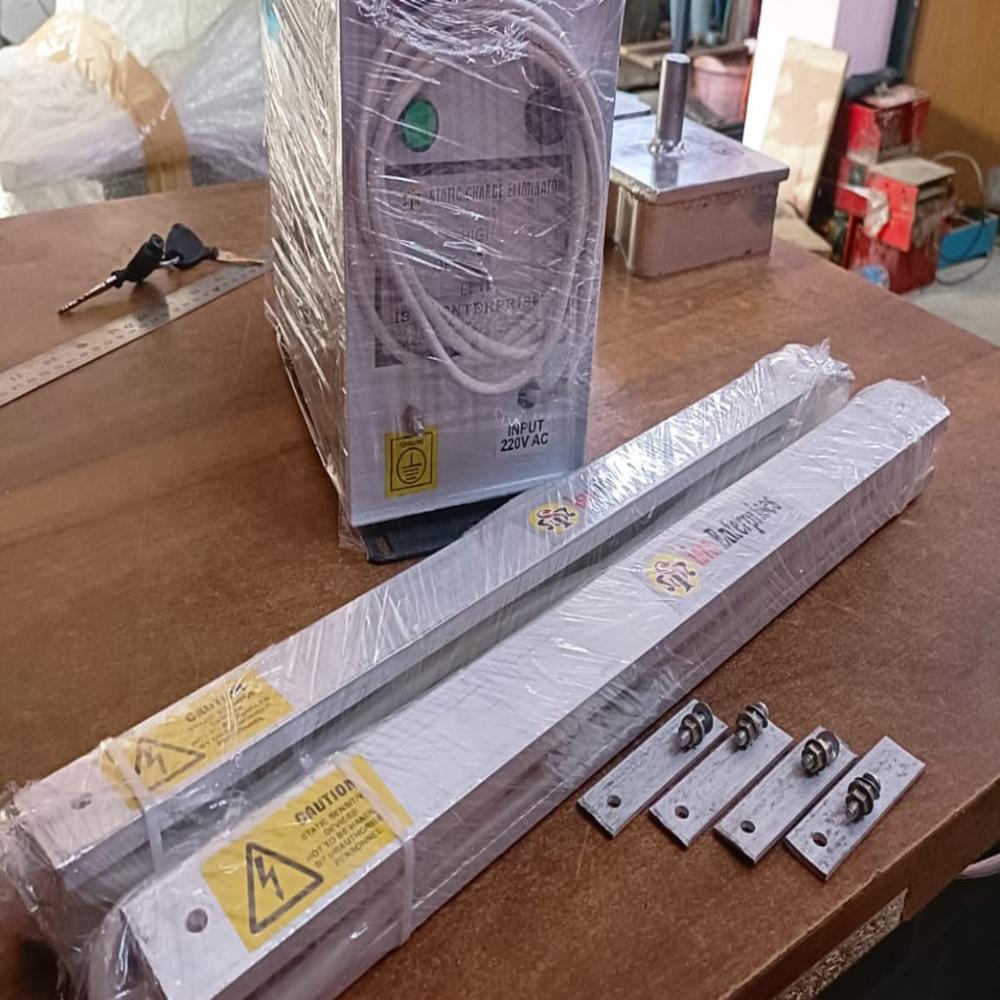Anti static device
Anti static device Specification
- Phase
- Single -phase
- Features
- Grounding, Dissipative, properties, Neutralization,surface Resistivity
- IP Rating
- While an anti-static device itself doesn't have an IP rating, it might be housed within an enclosure that does. The IP rating of that enclosure would be determined by the manufacturer based on the specific testing requirements outlined in IEC 60529.
- Power Rating
- 230Ac/50hz
- Conductor
- Conductive materials play a crucial role in these devices, either by providing a pathway for static charge dissipation or by creating a Faraday cage effect to shield sensitive items.
- Material
- Metalic
- Rated Voltage
- 6kv to 25 kv Volt (V)
- Display Type
- wrist straps, grounding mats, antistatic clothing, and ionizing air blowers.
- Usage & Applications
- Common applications include electronics manufacturing, printing, packaging, plastics processing, and the automotive industry.
- Warranty
- 1 year
- Frequency
- 50-60Hz Hertz (HZ)
- Product Type
- Static charger
- Function
- neutralizing static electricity, preventing it from causing problems like dust attraction, material sticking, or electrical shocks.
- Application
- Printing, textile, plastic poly making machine.cutting selling machine
- Size
- 28 inch
- Weight
- 6.5kg Kilograms (kg)
- Feature
- shockless and spark-free operation, various mounting options, and the ability to visualize static charge levels.
- Advantage
- improved product quality, enhanced safety, and increased production efficiency.
Anti static device Trade Information
- Minimum Order Quantity
- 10 Units
- FOB Port
- Delhi
- Payment Terms
- Cash Advance (CA), Cash in Advance (CID)
- Supply Ability
- 50 Units Per Week
- Delivery Time
- 5 Days
- Sample Available
- No
- Sample Policy
- Sample costs shipping and taxes has to be paid by the buyer
- Packaging Details
- BOX
- Main Export Market(s)
- Asia
- Main Domestic Market
- All India
- Certifications
- ISO
About Anti static device
An anti-static device is any device that reduces, dampens, or inhibits the buildup or discharge of static electricity. These devices are crucial for preventing electrostatic discharge (ESD), which can damage sensitive electronic components, ignite flammable materials, and disrupt industrial processes. Common examples include wrist straps, mats, bags, and specialized equipment like ionizers and anti-static bars.
Price 8500 INR/ Set
- Minimum Order Quantity
- 10 Units
- Supply Ability
- 50 Units Per Week
- Delivery Time
- 5 Days
- Main Domestic Market
- All India
- Main Export Market(s)
- Asia

Price:
- 50
- 100
- 200
- 250
- 500
- 1000+
More Products in Generator Bar Category
ANTI STATIC BAR
Price 2500.0 INR / Piece
Minimum Order Quantity : 30 Pieces
Material : Aluminum chrome
Advantage : 1 year Warranty
Weight : 3kg
Size : 13x16
Static charge Remover
Price 9500 INR / Set
Minimum Order Quantity : 1000 Sets
Material : consists of two parts. One is No Spark/No shock type Electrode or Action Bar and other is High Voltage Generator. The action bar is mounted on the machine with its pins pointing 90 degrees towards the flowing material.
Advantage : eliminating static electricity and its associated problems.
Weight : 6.5kg Kilograms (kg)
Size : 28inch
ionizing bar
Price 2500.0 INR / Piece
Minimum Order Quantity : 100 Pieces
Material : Aluminum
Advantage : 1 year warrenty
Weight : 1 Kilograms (kg)
Size : 4 MITER
STATIC CHARGE ELIMINATOR
Price 8000.0 INR / Piece
Minimum Order Quantity : 10 Pieces
Material : MS
Advantage : 1 YEAR WARRENTY
Weight : 6.5 Kilograms (kg)
Size : 8 INCH








